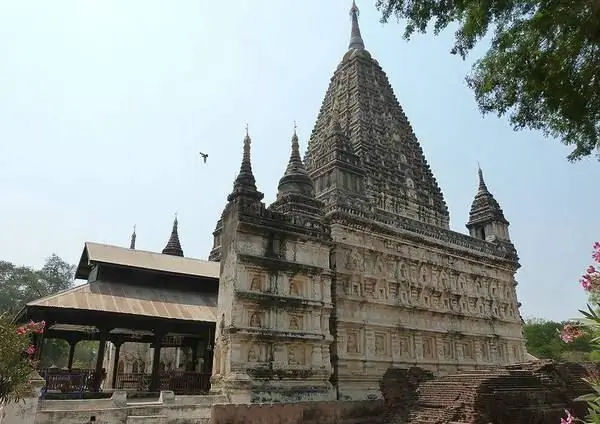
Description of the attraction
The Mahabodhi Temple in Bagan is a scaled-down replica of the famous Indian temple of the same name in Bihar, India. It was built by the pagan king Khtilominlo at the beginning of the 13th century. The history of the appearance of this temple begins a century earlier. Around 1120, the King of Bagan Alaungsithu sent artisans and a certain amount of money to restore the Indian Mahabodhi temple - one of the pilgrimage shrines associated with the name of Buddha. Here, according to legend, Buddha received enlightenment. The ruler Khtilominlo decided to celebrate this noble deed by the construction of a similar temple in Bagan.
Like the original temple, the Mahabodhi sanctuary in Bagan is built in an architectural style typical of the Gupta period and is crowned with a tall shikhara with flat sides. On the base around the shikhara - a high pyramidal spire - there are low stupas. In the shikhara, many niches have been created, which contain 450 statues of Buddha. Similar niches with sculptures can be seen on the walls of the foundation of the temple.
Like the Mahabodhi sanctuary in India, the Bagan temple is oriented towards the east. On the ground floor there is a statue of Buddha, whose right hand touches the ground. A similar statue can be seen on the top floor of the building. In the western corridor, a circle is marked on the floor, which symbolizes the place where the divine tree grows, under which Buddha Gautama meditates or rests.
The Mahabodhi Temple was severely damaged during the earthquake on July 8, 1975. In the period from 1976 to 1979, it was restored. Another reconstruction of the sanctuary took place in 1991-1992.






